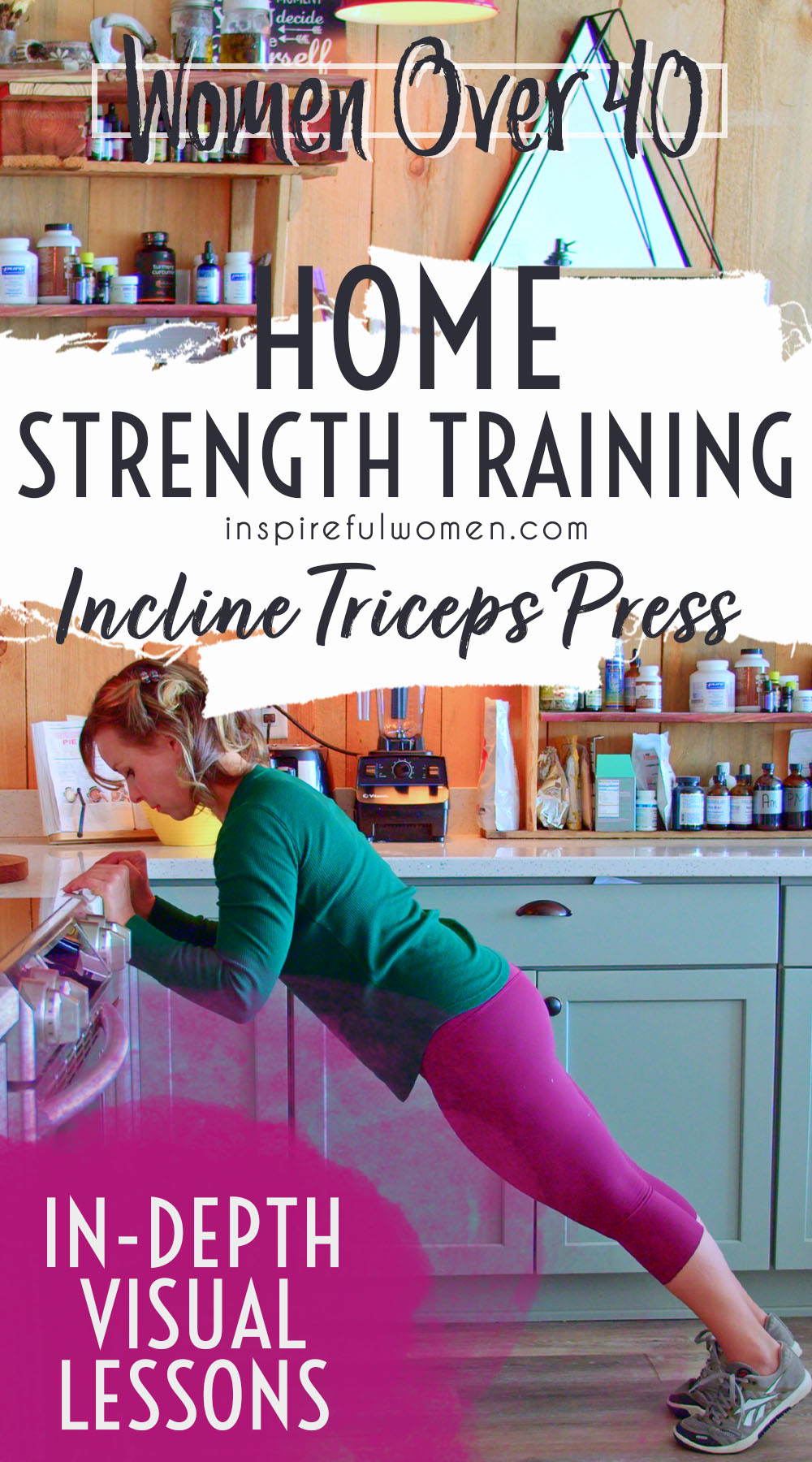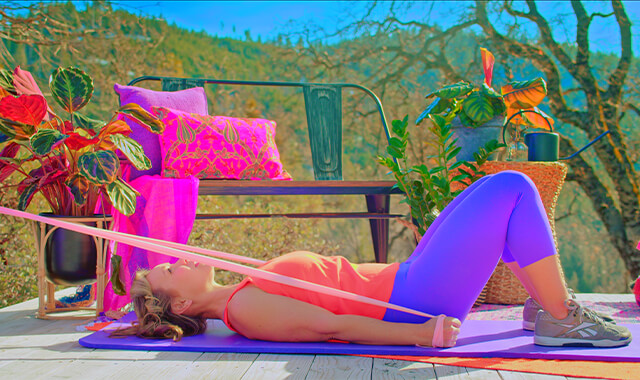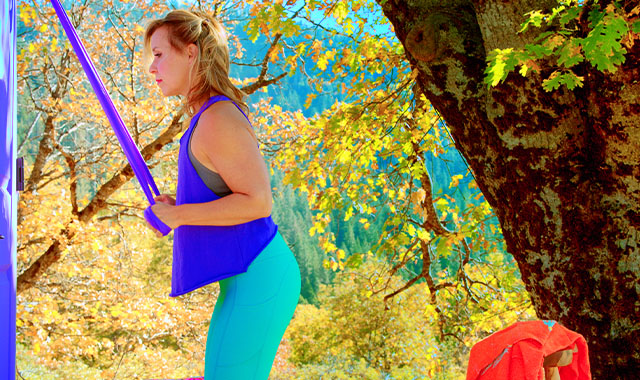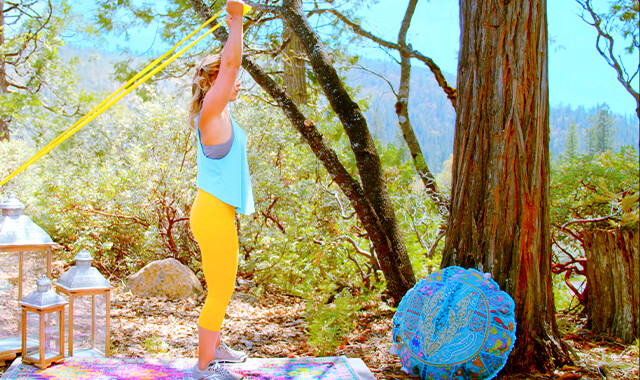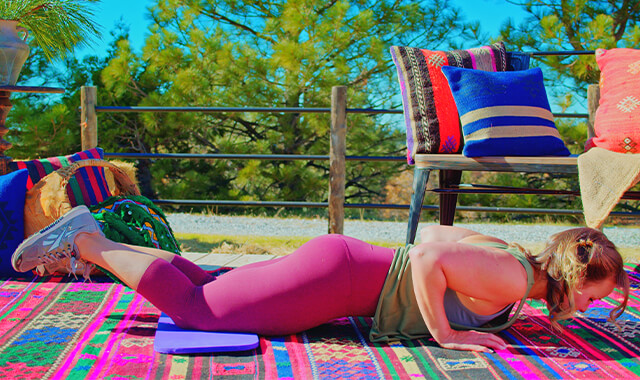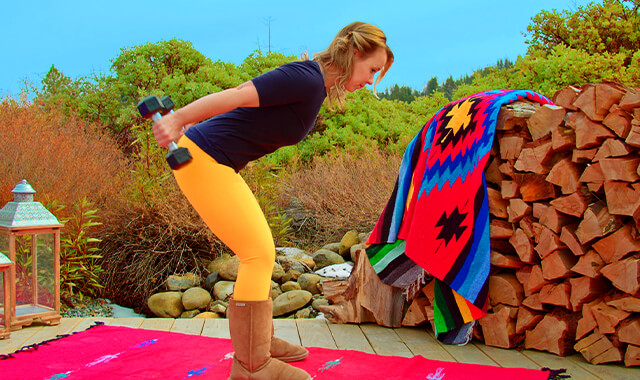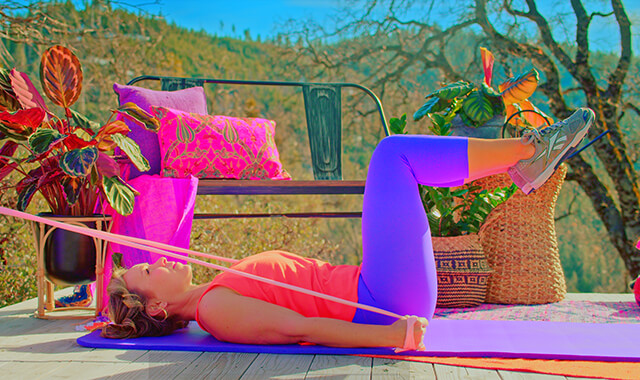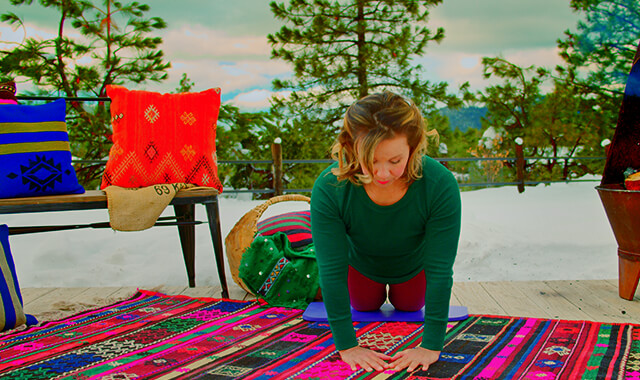Incline Tricep Extension on Toes
How to Do the Incline Bodyweight Triceps Extension On Toes | In-Depth Guide [VISUAL LEARNERS] Advanced
Proper Form | Home Resistance Training
WHAT DO YOU WANT TO SEE?
QUICK DEMO
QUICK DEMO
MUSCLES THIS WORKS
MUSCLES
MAIN MUSCLES WORKED IN the Incline Tricep Extension on Toes
TRICEPS
OTHER MUSCLES WORKED:
- Anterior deltoid
- Middle and lower trapezius
- Rhomboids
- Serratus anterior
- Latissimus dorsi
- Teres major
- Rotator cuff
- Pec minor
- Core muscles (obliques, transverse abdominis, quadratus lumborum, erector spinae, rectus abdominis, multifidi)
STARTING POINTERS
Starting Pointers
WHAT WE'RE DOING TODAY
ALL WE'RE DOING:
Verrrry similar to push-up which we all know, but keeping those elbows closer to our body.
The incline triceps extension on toes is a fun and effective exercise that targets the triceps, the muscles on the back of your upper arms. This exercise helps you build strength and tone your flabby arms. This exercise is very easy to make easier or more challenging. Start with a higher surface until your form is perfect. As you gain strength, the level of incline is reduced, moving towards doing these on the floor.
HOW TO DO THE EXERCISE
LOOKS
HOW the Incline Tricep Extension - Toes SHAPE OUR BODY
Balances out biceps in the upper arm, gives upper arm horseshoe definition. Toned core, waist.
PROPER FORM
PROPER FORM: Incline Tricep Extension - Toes
EQUIPMENT, SETS & REPS
EQUIPMENT
Surface to incline on to: depending on strength - table, back or arm of the couch, counter, exercise bench, window sill, step, stool, heavy chair. Any level surface of the appropriate height that is level and will not move or break under body weight. Higher surfaces are easier.
SUGGESTED STARTING WEIGHT FOR WOMEN:
Start with a surface that is relatively high (counter or dining room table) until your form is perfected.
SETS & REPS:
2 sets of reps to fatigue (complete as many reps as you can with perfect form, take a break, and complete one more set until failure (loss of form); Alternatively - 2 sets of 8, moving to a higher surface to complete the reps if needed. Once you can complete 20 reps with perfect form it is time to work off of a lower surface.
PACE:
Controlled up and very slow down. It is easy to just relax back down - make sure you are working in both directions.
BODY POSITION
BODY POSITION FOR the Incline Tricep Extension - Toes
Stand facing the object that you will incline onto.
HANDS: Place your hands on the surface that you will be leaning on, with your palms down and fingers pointing up. Your hands should be slightly narrower than shoulder-width apart.
BODY STANCE: Walk your feet back, and your arms will be stretched straight out in front of you, the starting position is a straight arm not bent - you should be able to draw a straight line down the side of your body through your earlobe, top of your shoulder, side of your torso, your hip and leg to your ankle. Neutral spine - chest broad, shoulder blades together and down the back.
ARMS: Move your arms up or down so that your hands are at least at shoulder height when you are in the starting position - feet positioned where you want them. Elbows straight. From the side, your upper arm will not be in line with your torso, they will be outstretched in front of you to some degree.
FEET: Your feet can be about shoulder width apart - should be comfortable and stable. Feet on the floor, or you can be on the ball of your foot if it is more comfortable (ankle range of motion is limited or calf muscles are tight).
NECK: Neutral and relaxed throughout the exercise.
Once inclined on the selected surface, you may need to play around with the exact location of your hands/feet. The exact location of the hands will vary according to the height of your elevated surface and the inclined angle of your body. There should not be any discomfort in your wrists, elbows, or shoulders. The higher your hands are the less your wrists will have to bend.
HOW TO DO
HOW TO DO the Incline Tricep Extension - Toes
CUE: Keep your elbows in line with your hands (not flaring out or in). Isolate the movement to your elbow joints. If you are used to a standard push-up, you may start trying to move through your shoulders instead of your elbows. It is easy to use the wrong muscles for this exercise - letting your elbows flare out and your large chest muscles will then get more involved - it is not a standard push-up, the chest muscles should not be helping.
Slowly bend your elbows to lower your body down, and keep your elbows in line with your hands. Your upper arm should not move (there may be some change of position but most of the movement should come from the elbow joint as it bends and straightens). Your forearms will lower down and lift your body back up again. (Editing to avoid confusion: from the side - your upper arm is perpendicular (in flexion) to your body (approximately - depending on the level that you position your hands), and your elbows are straight. To do the movement - bend your elbows - your forearm lower down to make a 90-degree angle between your upper arm and your forearm.) Pause at the bottom of the movement.
Push to straighten your elbows to lift your body back up to the starting position. Your arm is fully straight but not locked.
Perform until you are unable to maintain good form or for the desired reps.
HOW TO SAFELY GET OUT OF THE EXERCISE
Walk your feet back into standing.
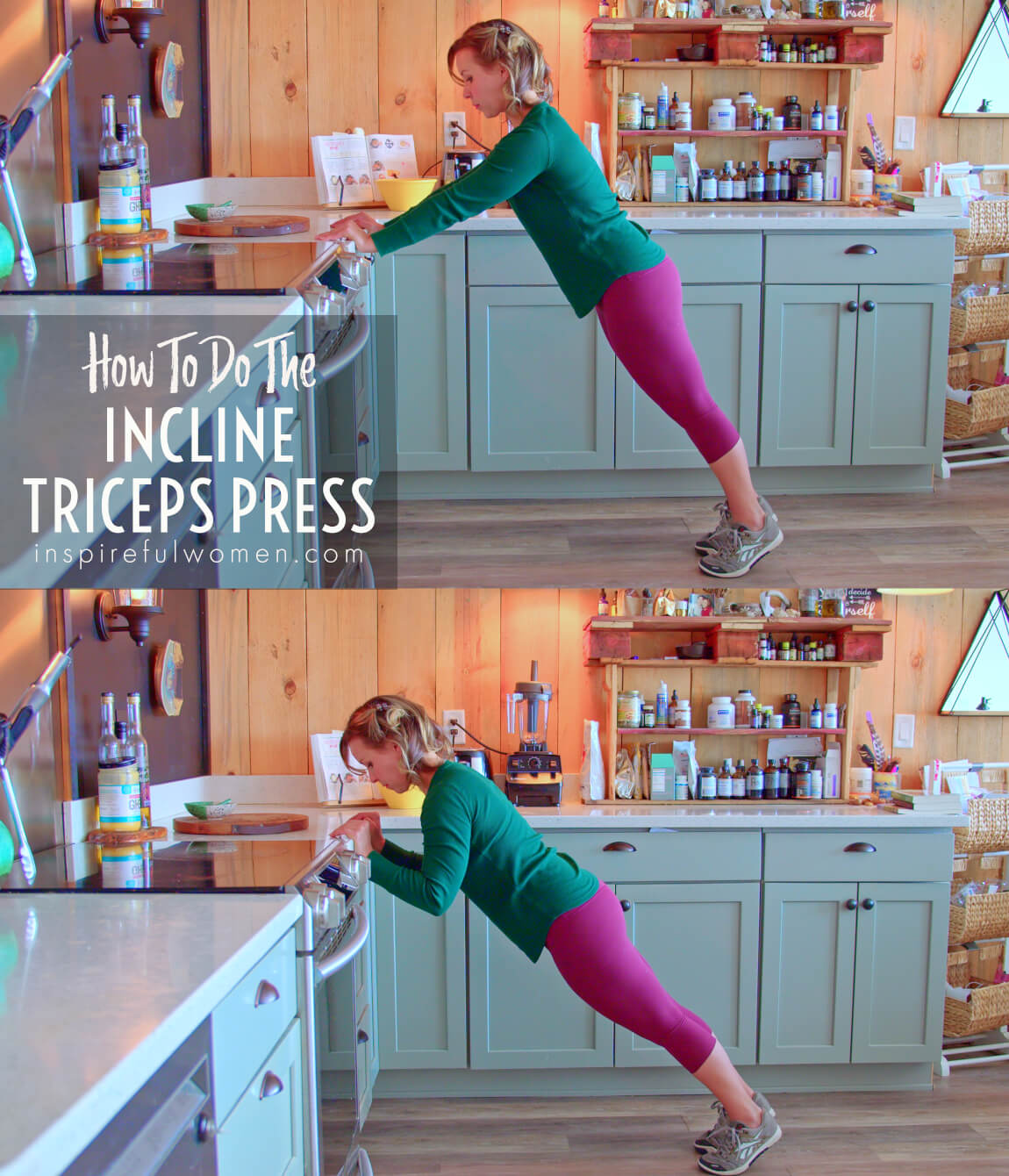
WHAT WE'RE DOING TODAY
WHAT & WHY
BENEFITS OF TRAINING THE triceps
WHAT
If this exercise looks suspiciously like a push-up, you would be right. But we tweak it just a bit to target our triceps more specifically.
A TRICEP EXERCISE WITH NO WEIGHTS! JUST YOUR BODYWEIGHT IS NEEDED. #KEEPLIFESIMPLE
Bodyweight tricep exercises are convenient because they can be done almost anywhere and they do not require any equipment. The exercises are pretty intense - moving your body using just your triceps is pretty demanding, not only for your triceps but also for all of the muscles that stabilize the arm, shoulder, and torso.
Bodyweight exercises are done in a closed chain - meaning that the hand is not free to move during the exercise, this trains the muscles of the arm and shoulder to stabilize the joints by improving the neuromuscular control (the nerve communication to the timing and amount of muscle activation) of the smaller muscles of the joints.
Bodyweight exercises require more balance, stability, and control, incorporating many of the muscles of the legs and torso - making it a nice full-body exercise.
WHY BOTHER DOING IT?
WHY
WHY DO WE EVEN CARE?
MAKES SENSE TO STRENGTHEN THE BIGGEST MUSCLE OF OUR ARM
Working the triceps is important to balance the frequently overtrained/overused biceps muscle.
The triceps is the largest muscle of the upper arm, it accounts for about ⅔ of the muscle bulk of the upper arm. This is especially important when the muscles need to work together to stabilize the joints of the elbow and shoulders. When one of the two muscles is proportionately stronger than the other - it can cause poor alignment at the elbow or shoulder joint, putting it at a higher risk for injury. It is smart to include a few bodyweight exercises in your program.
Arm exercises that work the muscles of the legs, torso, and upper body to stabilize the body as the arms work will improve your ability to safely lift, push and pull heavier objects for a longer period of time without injury. Training the muscles with bodyweight exercises teaches the whole body to work together, this is really important for many daily activities - pushing a heavy stroller, wheelchair, grocery cart, lawnmower, putting heavy boxes overhead, working overhead - painting, changing light bulbs, cleaning.
IMPROVE ABILITY WITH LOTS OF OTHER EXERCISES
Many other exercises, especially core exercises we do at Inspireful Women, involve using the triceps to some degree. The more we can strengthen the arms- triceps, biceps, shoulders & upper back muscles, the more we can progress the core exercises. Sometimes it's our arms that are a limiting factor
EVERYDAY LIFE
EVERYDAY LIFE &
MUSCLE FUNCTION
HOW WE USE OUR tricep MUSCLES IN EVERYDAY LIFE
1. STRAIGHTENS (EXTENDS) THE ELBOW (ALL THREE HEADS)
- Pushing an object overhead
- Pushing a door open or shut
- Chopping - swinging down
- Hammering - swinging down
- Sawing - pushing out
- Throwing a ball overhand
- Swatting a fly
2. THE LONG HEAD PULLS THE ARM DOWN WHEN IT IS OVERHEAD (SHOULDER EXTENSION)
- Pulling a cord to open a curtain
- Pulling a window down to shut it
3. ALL THREE HEADS HELP TO HOLD THE ELBOW JOINT STILL (JOINT STABILIZATION), AND THE LONG HEAD HELPS TO HOLD THE SHOULDER JOINT STILL
- Writing
- Pushing a stroller or grocery cart
- Using a screwdriver or knife
- Knitting
- Replacing a ceiling lightbulb
HOW TO FEEL WHAT MUSCLE IS WORKING
How to Feel What Muscle is Working
To feel your triceps activated:
- Lift your arm in front of you and set your hand and forearm on a table or counter.
- Put your other hand on the back of your upper arm.
- Press down with your hand resting on the surface.
- press down as if you were trying to straighten just your elbow;
- press down as if you were trying to pull your upper arm down to your side. In both cases, you should feel your triceps working.
SCIENCY STUFF
ALLLL MUSCLES & WHEN
ALL MUSCLES WORKING & WHEN DURING the Incline Tricep Extension - Toes
The muscles used for this exercise will be affected by the level of the incline. High incline = less body weight on the arms - the core muscles will work less, the triceps will work less - the anconeus and medial triceps may not contribute much at all to extend the elbow. Low incline (more horizontal body position) = more body weight on the arms. The core muscles will need to work harder and the medial triceps and anconeus will need to help to extend the elbows.
The core muscles and muscles of the hips and legs will work to stabilize the body during the movement. The scapular and back muscles (rhomboids, mid and lower traps, serratus anterior, pec minor, lat, teres major) work to hold the shoulder blades together and down as the elbow bends and straightens with each rep.
The movement begins as the triceps (and anconeus) work eccentrically to control the weight of the body as it is lowered down. When the body is just hovering, all of the muscles work isometrically to hold the position. The triceps (all three heads) and anconeus (the small muscle that helps to extend the elbow) work concentrically to extend the elbows and push the body up.
The next rep is initiated with an eccentric contraction of the triceps.
PIN IT FOR LATER!
